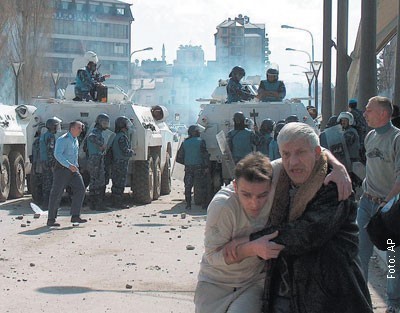
Eleven years ago, on March 17th and 18th 2004, a violent unrest broke out in Kosovo and Metohija. Nineteen people were killed; eight of them Serbs and 11 Albanians lost their lives in the fight against the international security forces.954 people were injured, more than 900 Serbian, Roma and Ashkali homes were torched, 4,000 people were expelled from their homes, nearly a 100 Serbian churches and monasteries were destroyed and desecrated.
Six towns and nine villages were ethnically cleansed, 935 Serbian houses and ten public buildings were destroyed, burned or severely damaged. Moreover, 72 UN vehicles were destroyed. During the violence 39 temples of the Serbian Orthodox Church were destroyed and burned to the ground, including 18 cultural monuments, such as the temple Bogorodica Ljeviška in Prizren (UNESCO listed). Priceless cultural heritage, thousands of icons, frescoes and other religious relics, old and rare books, documents of the Serbian Orthodox churches in Kosovo and Metohija were lost, accounted missing, damaged or destroyed.
Motive or pretext for the Pogrom was the local media campaign in which the Serbs were accused of forcing with dogs the boys of Albanian origin from the village of Zubin Potok to cross the river in which one of them was drowned. UNMIK police investigation found that the allegations were false, and international police spokesman at the time stated that, “surviving boys were under strong pressure from Albanian journalists and politicians to accuse the Serbs from the neighbouring villages”. First protests of Kosovo Albanians began in the southern part of Mitrovica in an armed attack on Serbs who live in the northern part of the city.